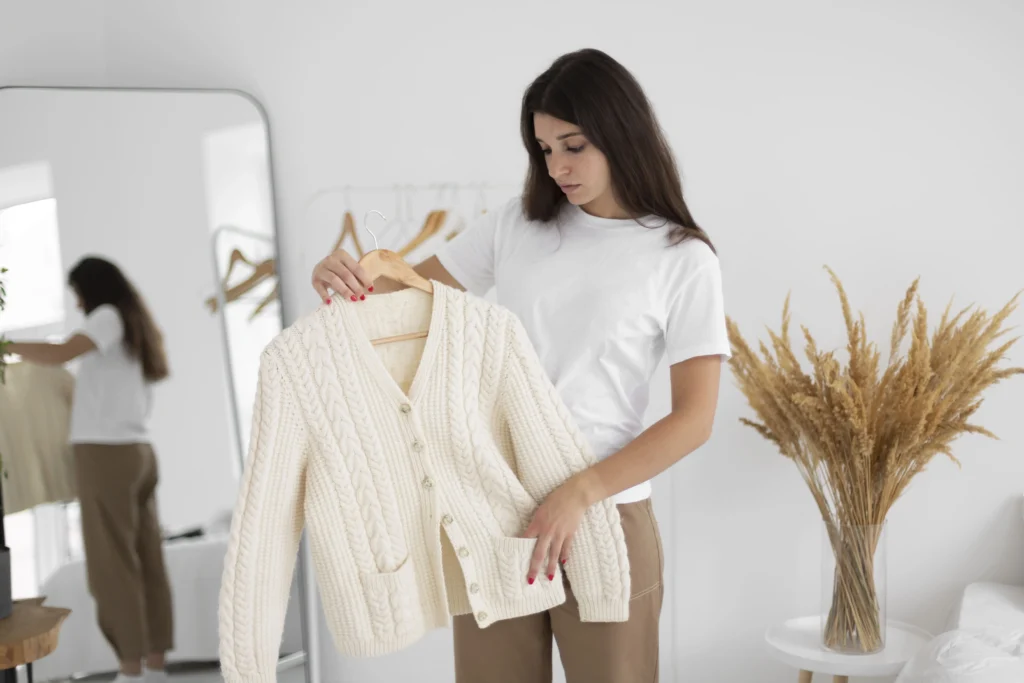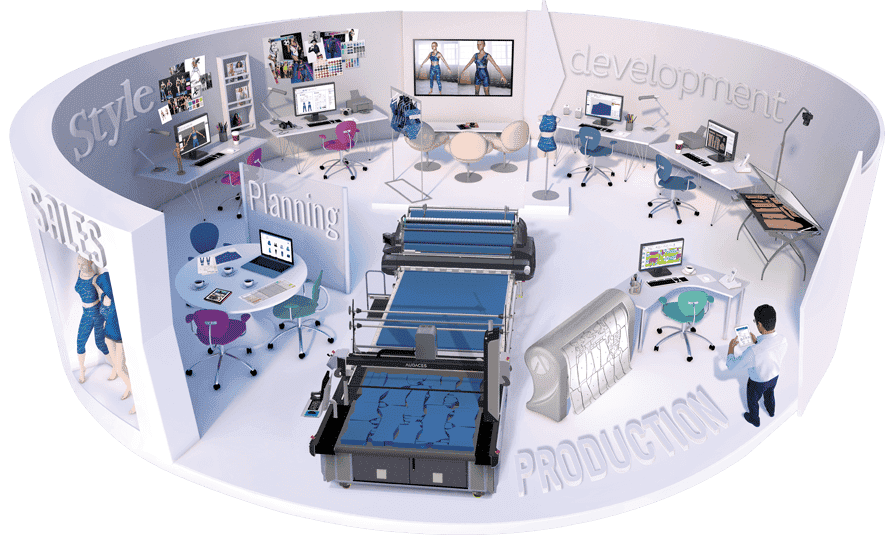Summary
- Slow fashion values ethical and sustainable clothing production.
- It focuses on creating high-quality pieces that last longer.
- Create your slow fashion pieces with Audaces technology. Try Audaces360 for free.
The concept of slow fashion emerged as a conscious and sustainable response to the fast fashion industry.
Fast fashion is famous for rapid consumption and mass production of disposable clothing.
Today, environmental and social issues are getting more attention. Slow fashion offers a more ethical and responsible way to shop.
Discover how this approach can transform our way of dressing and consuming. Enjoy your reading!
Sumário
Why is it important to understand slow fashion?
When we choose slow fashion, we support brands that care about the environmental and social impact of their production.
Additionally, slow fashion encourages us to consume more consciously.
Instead of buying many clothes that you will soon discard, we start choosing more versatile and durable pieces.
This not only reduces waste but also saves us money in the long run.
It also makes us appreciate what we have more, creating a stronger connection with the clothes we wear.
Another important point is that understanding slow fashion allows us to positively influence the fashion industry.
When more people start demanding sustainable and ethical practices, brands feel the pressure to change their production methods.
This can lead to a significant transformation in the sector, benefiting both workers and the environment.
Learn more: Explore the process of crafting a successful fashion collection
What is slow fashion?
Slow fashion is a movement in fashion that values ethical and sustainable clothing production. Unlike fast fashion, slow fashion focuses on creating high-quality pieces that last longer.
This means using eco-friendly materials and ensuring workers receive fair wages and work in good conditions.
The core idea of slow fashion is to buy less but better.
Instead of filling your wardrobe with cheap clothes, slow fashion encourages you to choose pieces that will last for many years.
It also promotes the appreciation of artisanal and locally made clothing, supporting small brands and craftsmen.
Another important aspect of slow fashion is transparency. These brands tend to be open about their production processes, showing how they make clothes and where materials come from.
This helps consumers make more informed and conscious choices.
Learn more: Why consider sustainable consumption and production for your company?
What are the characteristics of slow fashion?
- Sustainable production: Using eco-friendly materials and practices that minimize environmental impact.
- Quality over quantity: Focus on durable clothing that doesn’t need frequent replacement.
- Labor ethics: Ensuring fair working conditions and appropriate payment for workers.
- Transparency: Brands being open about their production processes and the origin of materials.
- Conscious consumption: Encouraging people to buy less and choose pieces they truly need and will use for a long time.
- Support for local production: Valuing artisanal and locally made clothing, often from small producers.
- Timeless style: Creating classic pieces that don’t quickly go out of fashion.
- Waste reduction: Minimizing waste during production and promoting the reuse and recycling of clothes.
How does the slow fashion movement promote sustainability?

It encourages the use of eco-friendly materials, such as organic cotton and recycled fabrics. They have less environmental impact.
Brands following this movement also ensure fair working conditions, respecting workers’ rights.
Slow fashion promotes local and artisanal production, reducing the carbon footprint associated with transportation.
It also encourages conscious consumption. People buy less but better, choosing high-quality pieces that they truly need and love.
This way, slow fashion helps reduce waste and the use of natural resources, contributing to a more sustainable world.
Learn more: Discover how sustainable design can delight your customers
How to produce well-fitting garments?
By implementing slow fashion practices, you contribute to a more sustainable future and meet the demand for ethical fashion.
Here’s how:
Use renewable raw materials
Opt for organic fabrics like organic cotton, linen, and bamboo, grown sustainably. Also, consider using recycled fabrics, like recycled polyester.
Reduce resource waste
Implement cutting techniques that minimize fabric waste and recycle leftover materials. Optimize water and energy use during the production process.
Obtain environmental certifications
Get certifications such as GOTS (Global Organic Textile Standard) or OEKO-TEX. They certify sustainable and safe textile production practices.
These certificates help build consumer trust.
Invest in cutting-edge technology
Use technologies that reduce environmental impact, like dyeing machines that use less water and fewer chemicals.
Automation and digitization of the design process can also reduce errors and waste.
Learn more: How can fashion brands boost their business with technology?
How can slow fashion impact your clothing business?

The concept of slow fashion can positively impact your clothing business by promoting sustainable and innovative practices.
These practices not only benefit the environment but also increase the efficiency and quality of your products.
Sustainable logistics
Sustainable logistics minimize the environmental impact of transporting and storing materials and products.
Fabric reuse
Reuse fabrics and material leftovers to produce new pieces or accessories. This minimizes material waste and transforms leftovers into useful products.
Additionally, it reduces raw material costs by utilizing leftovers that would have no other use.
Audaces Marker and Audaces Supera Max can help maximize fabric usage and efficiently manage leftover materials.
Innovative processes
Implement new technologies and methods to improve production efficiency and sustainability. For example, automated machines that reduce errors and speed up production.
Digital solutions from Audaces for creating and adjusting garment samples also reduce the need for physical samples.
Learn more: 9 fabrics with the perfect fit to use in your fashion collection
Embrace slow fashion practices in your clothing business with Audaces360

Audaces360 is a complete solution that connects creation and production in fashion manufacturing, ensuring more precision and profit.
One of the key advantages is a comprehensive view of the entire process, using various complementary features.
Each stage of the work provides real-time information to the next, streamlining quick and accurate decision-making.
This helps speed up production and better meet customer orders, allowing each customer to personalize their pieces.
Additionally, the system allows clothing businesses to work with smaller inventories, meaning lower costs and higher profits.
Producing on-demand is an efficient way to avoid waste and make better use of available resources.
Find out how to make your clothing business more sustainable! Download our e-book and make slow fashion the future of your industry:
FAQ
Instead of buying many clothes that you will soon discard, we start choosing more versatile and durable pieces.
Slow fashion is a movement in fashion that values ethical and sustainable clothing production.
It encourages the use of eco-friendly materials, like organic cotton and recycled fabrics, which have less environmental impact.






